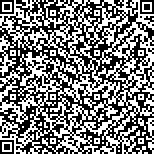周雪莹,张盛,徐德毅,等.右侧低频rTMS对老年抑郁症患者抑郁症状及认知功能的影响[J].中华物理医学与康复杂志,2023,45(4):335-340
扫码阅读全文

|
| 右侧低频rTMS对老年抑郁症患者抑郁症状及认知功能的影响 |
|
| |
| DOI:10.3760/cma.j.issn.0254-1424.2023.04.010 |
| 中文关键词: 重复经颅磁刺激 抑郁症 认知功能 |
| 英文关键词: Repetitive transcranial magnetic stimulation Depression Cognitive function |
| 基金项目:中央高校基本科研业务费专项资金资助(2018KFYYXJJ113) |
|
| 摘要点击次数: 4055 |
| 全文下载次数: 4036 |
| 中文摘要: |
| 目的 探讨右侧低频重复经颅磁刺激(rTMS)对老年抑郁症患者抑郁症状及认知功能的影响。 方法 采用随机数字表法将86例老年抑郁症患者分为低频组(43例)和对照组(43例)。2组在抗抑郁药物治疗的基础上,低频组给予1.0 Hz的rTMS治疗,刺激部位为右侧背外侧前额叶皮质区,每日治疗1次,每次20 min,每周5次,治疗4周,共20次;对照组给予相同时间和频次的伪刺激治疗。分别于治疗前及治疗第1、2、3、4、6、8周末,采用汉密尔顿抑郁量表(HAMD-24)评估2组患者的抑郁情况,采用威斯康星卡片分类测验(WCST)、连线测试A(TMT-A)评估患者治疗前及治疗4、8周末的认知功能,治疗期间记录患者的不良反应。 结果 治疗前,2组患者的HAMD评分及WCST评分组间差异均无统计学意义(P>0.05)。治疗第1、2、3、4、6、8周时,2组患者的HAMD评分均较组内治疗前明显下降(P<0.05);治疗3、4、6、8周后,各时间点低频组的HAMD评分均低于对照组,且组间差异均有统计学意义(P<0.05)。治疗4、8周后,2组患者WCST评分中的完成分类数和正确应答数评分均增加,而错误应答数和持续错误数评分均较组内治疗前明显减少(P<0.05);治疗4、8周后,各时点低频组较对照组患者WCST中完成分类数、正确应答数均增加,错误应答数、持续错误数均减少,且组间差异有统计学意义(P<0.05)。治疗4、8周后,2组的TMT-A总时间与组内治疗前比较,差异有统计学意义(P<0.05),但治疗前后组间各时间点TMT-A总时间差异无统计学意义(P>0.05)。2组患者治疗后的不良反应发生率组间差异无统计学意义(P>0.05)。 结论 抗抑郁药物治疗基础上,右侧低频rTMS可更快改善老年抑郁症患者的抑郁症状和认知功能,且不良反应少、耐受性好。 |
| 英文摘要: |
| Objective To explore any effect of repeated application of low-frequency transcranial magnetic stimulation (rTMS) on depression and the cognition of depressed elderly persons. Methods Eighty-six elderly persons with depression were randomly divided into an rTMS group and a control group, each of 43. In addition to anti-depressant treatment, the rTMS group was given 20 minutes of 1Hz rTMS daily applied over the right dorsolateral prefrontal cortex, five times a week for 4 weeks. The control group was given sham treatment on the same schedule. Before the experiment and after 1, 2, 3, 4, 6 and 8 weeks of the treatment, depression in both groups was evaluated using the Hamilton Depression Scale (HAMD-24). At the 4- and 8-week evaluations the Wisconsin Card Sorting Test (WCST) and the Trail Making Test Part A (TMT-A) were also administered. Results Before the treatment there were no significant differences in the 2 groups′ average HAMD or WCST scores. At each subsequent evaluation both groups′ average HAMD score had decreased significantly. After 3 weeks the average HAMD score of the rTMS group consistently remained significantly lower than the control group′s average. At the 4- and 8-week evaluations both groups′ WCST and TMT-A scores had improved significantly compared with before the treatment, with significantly greater improvement in the rTMS group′s average WCST result, though not in their TPT-A result. There was no signi-ficant difference in the incidence of adverse reactions between the 2 groups. Conclusion As a supplement to antidepressant treatment, right-side low-frequency rTMS can relieve depressive symptoms and improve the cognitive functioning of depressed elderly persons. It is well tolerated with few adverse reactions. |
|
查看全文
查看/发表评论 下载PDF阅读器 |
| 关闭 |